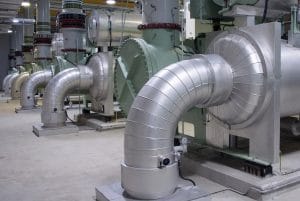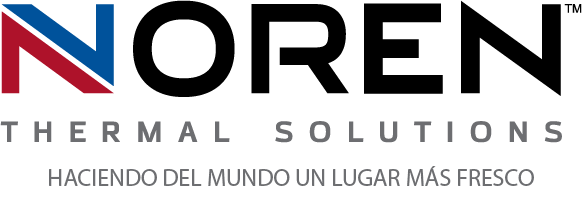 Electrical cooling technologies have taken leaps forward over the last several decades, and much of that innovation has stemmed from an ability to simplify what electrical cooling means. Traditionally, the only viable way to keep electrical enclosures properly cooled and prevent them from overheating was to utilize air conditioners or air compressors to consistently circulate chilled air. Today, however, many of the more common methods used for electrical cooling involve simpler and more natural heat transfer principles, which modern heat exchangers are designed to make optimal use of.
Electrical cooling technologies have taken leaps forward over the last several decades, and much of that innovation has stemmed from an ability to simplify what electrical cooling means. Traditionally, the only viable way to keep electrical enclosures properly cooled and prevent them from overheating was to utilize air conditioners or air compressors to consistently circulate chilled air. Today, however, many of the more common methods used for electrical cooling involve simpler and more natural heat transfer principles, which modern heat exchangers are designed to make optimal use of.
Taking advantage of natural heat transfer
The most impactful innovation in the field of electrical thermal management has been the transformation of how cooling technologies approach electrical waste heat. The process of creating and circulating chilled air through an electrical enclosure is a fairly straight-forward one, but it’s far from simple. The equipment needed to generate the chilled air on a consistent basis and circulate it continuously through multiple enclosures can be complex. Many different moving parts means a greater chance of a part malfunction interrupting the entire system. More recently, however, electrical cooling has increasingly taken the form of transferring waste heat, instead of chilling it. Within modern heat exchangers, this involves using an eco-friendly cooling fluid with a specific latent heat of vaporization to rapidly and efficiently remove waste heat from within electrical enclosures.
Transferring fluid through heat pipes
Of the many different types of heat exchangers available today, heat pipes are among the most frequently implemented. Heat pipe heat exchangers create an efficient flow system for a cooling fluid to rapidly transfer waste heat. Inside of the heat pipes, fluid that absorbs waste heat up to the point of its latent heat of vaporization becomes much less dense. In vapor form, it can more efficiently transfer the heat to a cooler area of the heat exchanger, such as a heat sink, and release it. Once it does, the fluid becomes liquid once again and continues the loop back toward the application’s heat source, absorbing and transferring more waste heat.
Combining methods in custom cold plates
Plate-based heat exchangers are another highly popular form of heat exchanger, and are used in a wide variety of industrial applications. Like heat pipes, cold plates are designed to utilize an eco-friendly cooling fluid to rapidly and efficiently transfer waste heat. The fluid flows through paths that are machined into the plates and are often customized to meet different applications’ unique thermal management needs. Cold plates combine various heat transfer methods, such as conduction and natural/forced convection, to allow them to absorb heat at any point in the plates’ surfaces and transfer it efficiently to the fluid flowing through them.
For more information about common methods heat exchangers use for electrical cooling, call Noren Thermal Solutions in Taylor, TX, at 866-936-6736.







